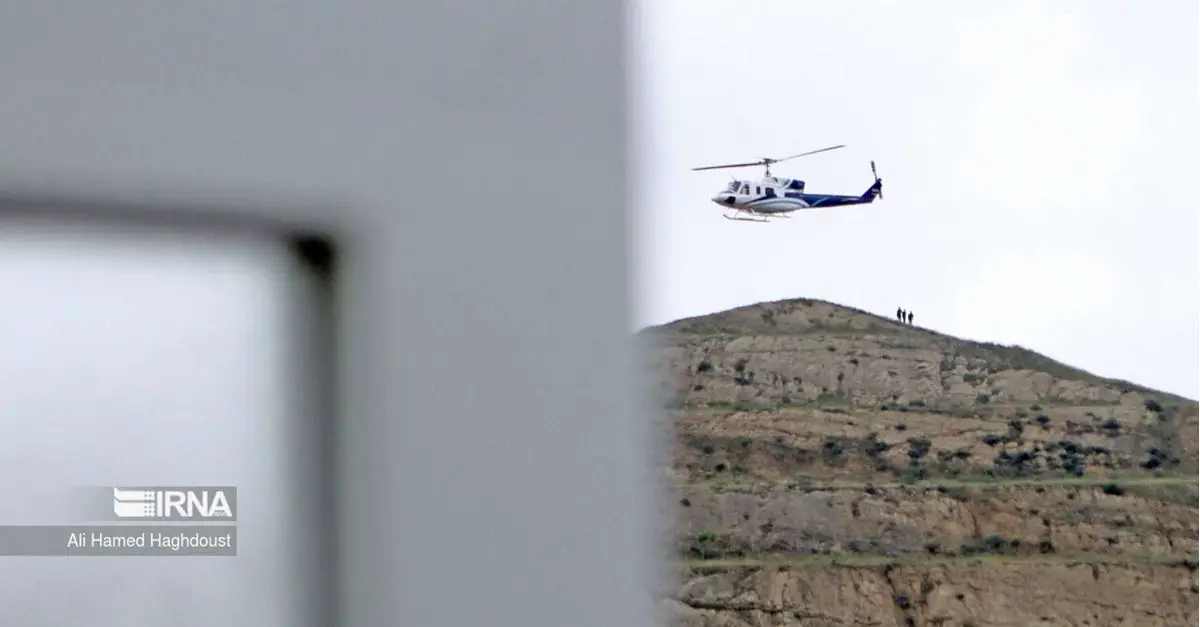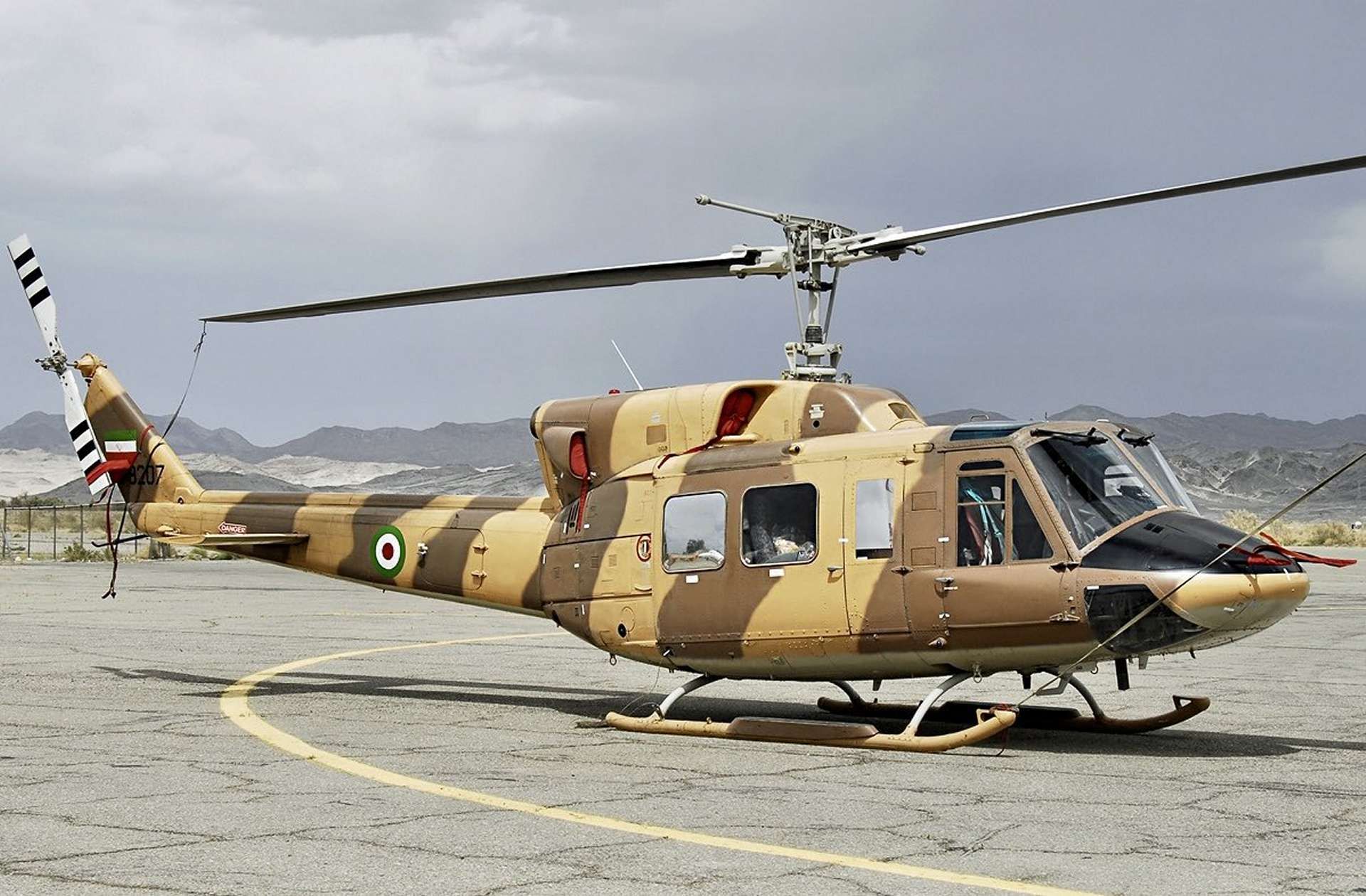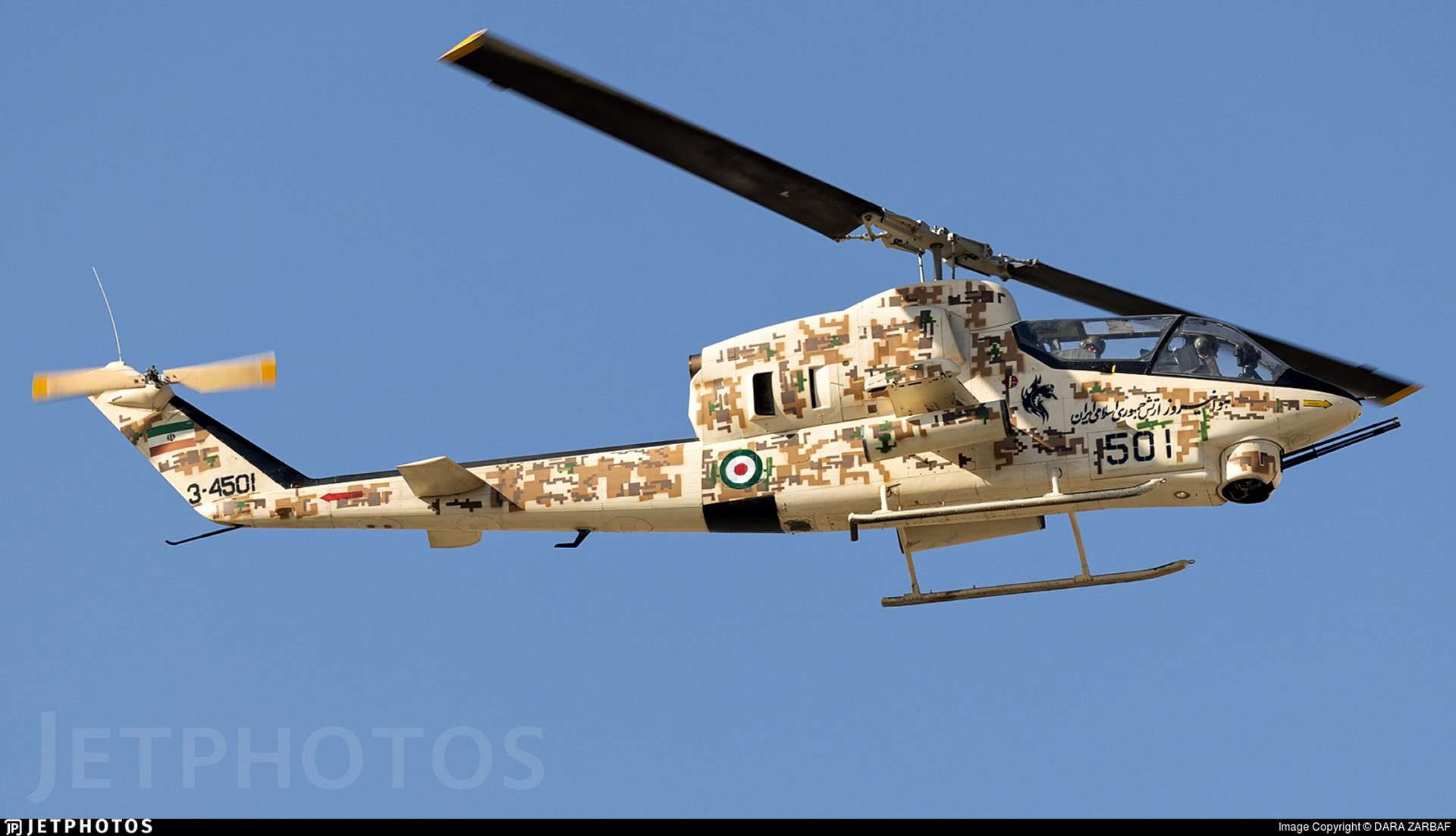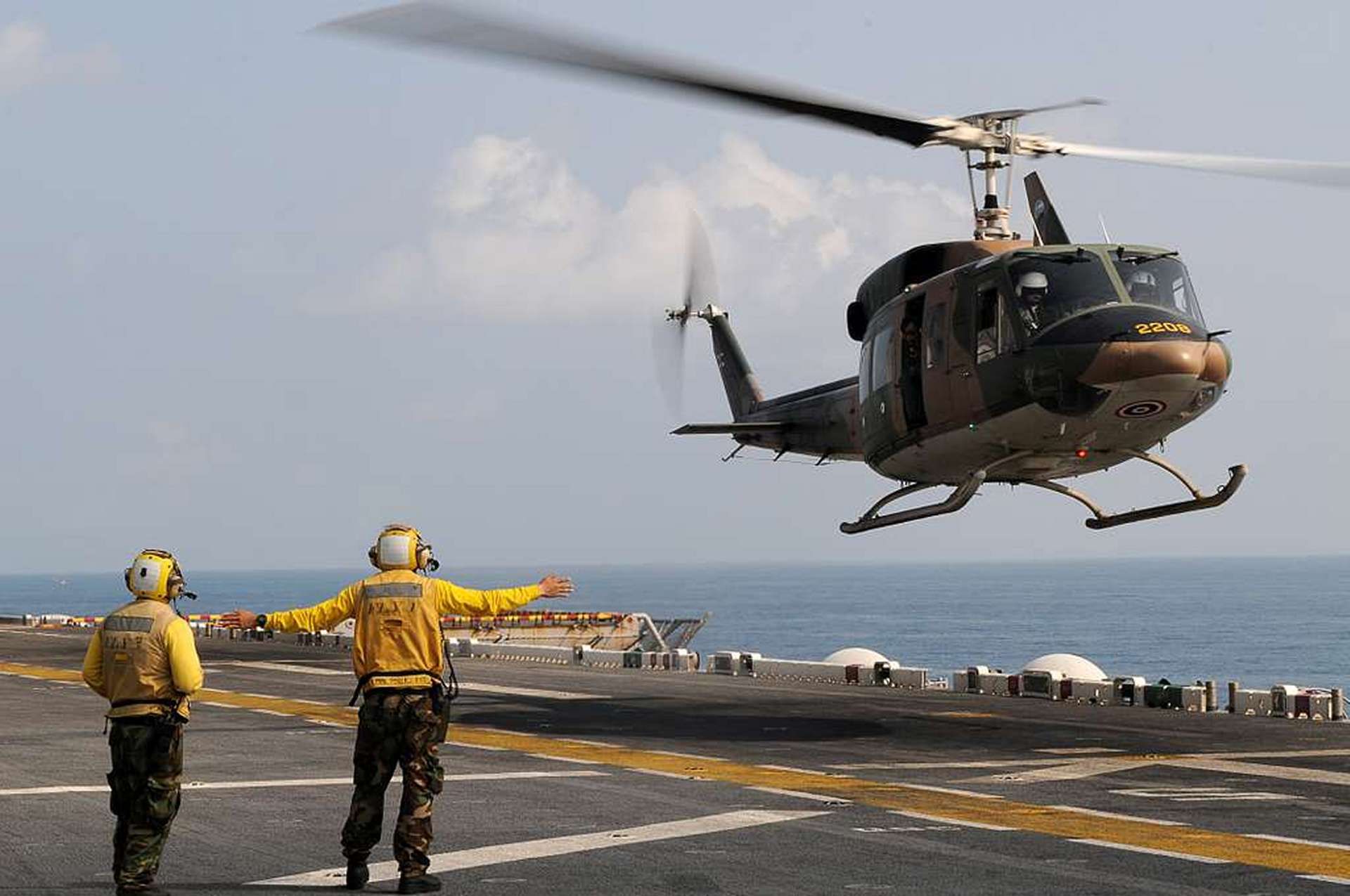Breaking news
Discover Details of Iranian Helicopter Model Involved in the Death of Iranian President Ebrahim Raisi.
On May 19, 2024, a helicopter operated by the Islamic Republic of Iran Air Force (IRIAF) crashed in the Dzmar forest area of Iranian Azerbaijan. The helicopter, part of the VIP Squadron, was carrying nine occupants, all of whom perished in the accident. Among the victims were Iranian President Ebrahim Raisi, Foreign Minister Hossein Amir-Abdollahian, several Iranian officials, and the Governor of East Azerbaijan.
Follow Army Recognition on Google News at this link

The officials, including Iranian President Ebrahim Raisi, Foreign Minister Hossein Amir-Abdollahian, several other Iranian officials, and the Governor of East Azerbaijan, were returning from the inauguration of the Qiz Qalasi Dam, a joint project on the Aras River border, with Azerbaijan's President Ilham Aliyev. (Picture source: IRNA)
The crash occurred under poor weather conditions, with heavy fog cited as a contributing factor. The officials were returning from the inauguration of the Qiz Qalasi Dam, a joint project located on the Aras River border, with Azerbaijan's President Ilham Aliyev. The dam is designed to enhance water reserves, support tourism and agriculture, and generate 270 GW/h of electricity annually. This project began two decades ago and aims to improve the water reserve at the upstream Khoda-Afarin Dam by 2 billion cubic meters per year through channels and networks leading to plains in East Azerbaijan, Ardebil, and the Azerbaijan Republic.
Following the crash, Supreme Leader Ayatollah Ali Khamenei declared five days of national mourning. Funeral processions have taken place across Iran, starting in Tabriz and continuing through Qom, Tehran, and Raisi's hometown of Mashhad. These processions have seen significant participation from the public, reflecting the event's impact on the nation. The simultaneous deaths of the president, the foreign minister, and several other high-ranking officials have significantly affected the Iranian political landscape.
In the interim, Vice President Mohammad Mokhber has been appointed as acting president, with presidential elections scheduled for June 28, 2024, to select Raisi's successor. According to The Stratcom Bureau on Twitter, the helicopter that crashed carrying Iranian President Ebrahim Raisi was a 30-year-old Bell 212, manufactured in 1994. The aircraft, with registration 6-9207 and manufacturer serial number 35071, had previously been used by the Iranian Air Force, as shown in an image depicting its earlier camouflage. The helicopter was certified only for Visual Flight Rules (VFR) and had a passenger capacity of six. Its spare parts were subject to sanctions, and its maintenance cycles were no longer supported by the manufacturer.
According to the Stratcom Bureau, the Bell 212's power plant was not equipped to handle high-altitude, heavy-load flights through mountainous terrain, lacking the necessary turboshaft power and response. Additionally, the helicopter was not equipped with the avionics required for low-visibility instrument flight. With its airframe having logged over ten thousand flight hours, the aircraft was beyond its reliable operational life. Operating this helicopter in Instrument Meteorological Conditions (IMC) without the appropriate avionics suggests significant oversight and risk, raising concerns about the decision-making process of the flight planners and pilots.

The Bell 212 helicopter, with registration 6-9207 and manufacturer serial number 35071, had previously been used by the Iranian Air Force, as shown in this image depicting its earlier camouflage. (Picture source: Twitter/The Stratcom Bureau)
The history of Iran’s helicopter fleet dates back to 1969 when Iran began developing its helicopter capabilities by purchasing a substantial number of helicopters from Agusta, an Italian company. By 1973, Iran expanded its fleet with the acquisition of helicopters from America’s Bell Textron, which included models like the Bell 205, the Bell 206, the Bell 212 two-bladed helicopter, and its four-bladed variant, the Bell 412. These purchases were part of a broader modernization effort led by Mohammad-Reza Shah Pahlavi to build a strong military aviation fleet. To support this expanding fleet, the Iran Helicopter Support and Renewal Company (IHSRC), known locally as Panha, was established. Panha quickly became the largest helicopter maintenance center in the Middle East, responsible for the upkeep and renewal of the expanding helicopter fleet.
After the 1979 Islamic Revolution and the subsequent severance of diplomatic and military ties with the USA, Iran faced challenges in maintaining its helicopter fleet due to the imposition of sanctions, which cut off the direct supply of spare parts and technical support for the Bell helicopters. Nevertheless, Panha's experts developed the capability to maintain and renew the helicopter fleet independently, including reverse engineering critical components and systems, which was important for supporting Islamic combatants during the Iran-Iraq War (1980-1988).
Therefore, Panha took on the responsibility of repairing and supporting various models of military and civilian helicopters, including the Bell 412, Bell 205, Bell 206, Bell 212, Bell 214, CH-54 Chinook, RH-53D, SH-3D, and Mil Mi-17. This support extended to multiple organizations such as the Iran Red Crescent Organization, the National Iranian Oil Company (NIOC), and Iran Army Aviation.
In response to Western sanctions, Iran shifted its focus from acquiring the best available helicopters globally to manufacturing them domestically. Since the 1990s, Iran has reverse-engineered parts, assemblies, and even whole aircraft, including Bell models like the 205, 206, and 214, through efforts by Iran Aircraft Manufacturing (HESA) and Panha. This led to the creation of local variants and upgrades, such as the Shabaviz 2-75, a reverse-engineered Bell 214C; the Shabaviz 206-1, a reverse-engineered Augusta-Bell AB-206, itself a variant of the Bell 206; the Shahed 278, a light helicopter with components similar to the Bell 206; the Panha 209-1 (Toufan 2), an upgrade of the AH-1J Cobra attack helicopter; and the Shahed 285, a light gunship derived from the Bell 206. Additionally, the Saba 248 is a new twin-engine, four-bladed utility helicopter similar to the Bell 427.
To date, the Bell 212, along with other Bell models such as the 412, has remained an integral part of the fleet maintained by Panha. The number of Bell 412 helicopters in Iran is not precisely documented, but they are used across various sectors. They have been used for both military and civilian purposes, benefiting from Panha’s maintenance and upgrades despite the continued sanctions. They are used by various Iranian entities, including the military, the Iran Red Crescent Organization, and the National Iranian Oil Company (NIOC). They serve in roles ranging from combat and troop transport to search and rescue, medical evacuation, and logistical support.

As of 2023, the Iranian military forces maintain a varied fleet of helicopters across different branches, including 50 AH-1J Cobra attack helicopters operated by the Iranian Army. (Picture source: Jetphotos/Dara Zarbaf)
As of 2023, the Iranian military forces maintain a varied fleet of helicopters across different branches, including the Army, Islamic Revolutionary Guard Corps Naval Forces, Naval Aviation, Air Force, and Law-Enforcement Forces. The Iranian Army's helicopter fleet includes 50 AH-1J Cobra attack helicopters. For transport, the Army operates 20 heavy CH-47C Chinook helicopters, 69 medium helicopters (comprising 49 Bell 214 and 20 Mi-171), and 78 light helicopters (including 68 Bell 205A (AB-205A) and 10 Bell 206 Jet Ranger (AB-206)). There are concerns about the serviceability of some of this equipment.
The Islamic Revolutionary Guard Corps Naval Forces use 5 Mi-171 Hip multi-role helicopters and have some light Bell 206 (AB-206) Jet Ranger transport helicopters. Naval Aviation operates 10 SH-3D Sea King helicopters for anti-submarine warfare and 3 RH-53D Sea Stallion helicopters for mine countermeasures. Their light transport helicopter fleet consists of 5 Bell 205A (AB-205A), 2 Bell 206 Jet Ranger (AB-206), and 10 Bell 212 (AB-212) helicopters.
According to available information, the Air Force, which includes equipment from the Islamic Revolutionary Guard Corps Air Force, has a serviceability rate of approximately 60% for U.S. aircraft types and about 80% for PRC/Russian aircraft. Their fleet includes 2 Bell 412 multi-role helicopters and several transport helicopters: over 2 heavy CH-47 Chinook helicopters, 30 medium Bell 214C (AB-214C) helicopters, and light helicopters including 2 Bell 206A Jet Ranger (AB-206A) as well as some Shabaviz 2-75 and Shabaviz 2061 helicopters, which are indigenous models in production. Finally, the law enforcement forces operate 24 light transport helicopters, comprising AB-205 (Bell 205) and AB-206 (Bell 206) Jet Ranger helicopters.

The Bell 212 helicopter was used by several armed forces across the world, such as the Royal Thai Navy. (Picture source: US DoD)
The Bell 212, also known as the Bell Two-Twelve, is a twin-engine, medium utility helicopter that first flew in 1968. It was originally manufactured by Bell Helicopter in Fort Worth, Texas, before production was relocated to Mirabel, Quebec, Canada, in 1988. The helicopter features a two-blade rotor system and was produced until 1998. Primarily used in civilian applications, the Bell 212 can seat up to 15 people, including the pilot, and can carry an external load of up to 5,000 pounds.
Developed from the stretched fuselage Bell 205, the Bell 212 was initially designed for the Canadian Forces as the CUH-1N, later redesignated as the CH-135. The U.S. military also adopted the Bell 212 under the designation UH-1N, ordering 294 units. By 1971, the Bell 212 had been adapted for commercial use, notably by Helicopter Service AS of Norway for offshore drilling support. It has also been used in logging, maritime rescue, and Arctic resupply operations.
The helicopter is powered by a Pratt & Whitney Canada PT6T-3 Twin-Pac engine, consisting of two coupled PT6 turbines driving a common gearbox. This engine configuration produces up to 1,800 shaft horsepower and allows the helicopter to maintain performance even if one turbine fails. Early versions of the Bell 212 featured a distinctive fin on the roof for improved turning performance during instrument flight, although this modification was later deemed unnecessary.
The Bell 212 has seen various adaptations, including the Twin Two-Twelve for civil utility transport and military versions such as the Agusta-Bell AB 212. It was further developed into the Bell 412, which features a four-blade main rotor. The Bell 212 was the first U.S. helicopter sold in the People's Republic of China in 1979. The helicopter's ICAO designator is "B212," and it has been widely used in various civilian and military roles.
The Bell 212's technical specifications include a length of 57 feet 1.68 inches and a height of 12 feet 6.83 inches, with an empty weight of 6,529 pounds and a maximum takeoff weight of 11,200 pounds. The main rotor has a diameter of 48 feet, covering a rotor area of 1,809.5 square feet. Powered by a Pratt & Whitney Canada PT6T-3 or -3B TwinPac engine, it can generate up to 1,800 shaft horsepower. The Bell 212 can cruise at a speed of 100 knots (120 mph) and reach a maximum speed of 120 knots (140 mph). It has a range of 237 nautical miles and a service ceiling of 17,400 feet, with a rate of climb of 1,745 feet per minute.


























